'Star Wars: Darth Vader by Kieron Gillen & Salvador Larroca Omnibus': Filling in the Gaps
Revisiting the first Darth Vader comic book series released under Disney ten years later.
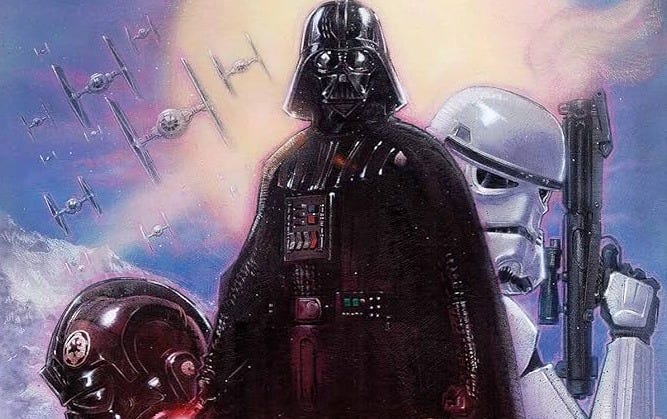
Foreign Perspectives is gradually shifting into more paid content. Certain columns such as these are free for all subscribers, but other articles will be exclusive for paid subscribers. If you enjoy the work I do, please consider upgrading to a monthly or yearly subscription. Your support is greatly appreciated and ensures that this Substack can continue to deliver high quality pieces.
While most have understandably given up on Star Wars with the present state of the franchise, I remain a dedicated fan. Call it battered spouse syndrome or call it naive optimism, but I’ve continued to monitor where this IP has gone fairly closely. Akin to Luke Skywalker’s enduring hope that there’s still good in his father, I’ll take the unpopular view that there’s still some good in Star Wars under Disney even if those moments often feel few and far between. The sequel trilogy sucked, but Rogue One was genuinely fantastic and I’ll stick out my neck to defend Solo as an enjoyable adventure film. The Acolyte was awful, but you’ve also got Andor, Skeleton Crew, and the first two seasons of The Mandalorian which I think are all worth watching.
Beyond the world of film and television, Star Wars has always had an enduring presence in literature. Both pre-Disney and in the modern era, there are a ton of Star Wars books that vary in quality. It’s stuff you seriously have to be a fan to bother checking out, but that’s where I’ve decided to come in. I’ve wanted to cover more books on Foreign Perspectives for quite some time now and considering that Star Wars novels and comics are occasionally part of my backlog, I figured I’d hit two birds with one stone — hence the column that is currently on your screen, dear reader.
I’ve recently gotten back into collecting Marvel’s giant (and heavy!) hardcover omnibus collections which reprint entire runs of comic book stories. Among those that have entered my possession is Star Wars: Darth Vader by Kieron Gillen & Salvador Larroca Omnibus, a 700+ page tome that has the entire run of the first comic book series in the Disney era starring the eponymous Dark Lord of the Sith. It came out at at a time when hype for Star Wars was at unimaginable levels in 2015 given the upcoming release of The Force Awakens. It’s hard to believe that a decade has already passed since then, but Star Wars is decidedly in a very different place now.
How much the franchise has changed (or declined) in the last ten years will be a subject for a different article. The point of these book reviews is to sort the wheat from the chaff in recommending Star Wars literature, and in the future I’ll also be commenting on the pre-Disney Expanded Universe “Legends” media that also encompasses a large part of my library. Most casual fans don’t know where to begin with Star Wars outside of the films, so I hope my columns will be of some assistance. For the time being though, let’s get back to Gillen and Larroca’s Darth Vader and all the content that is featured in this omnibus. Can this book hold the interest of even the most cynical lapsed Star Wars fans?
It’s a definitive “maybe.” Whether or not you enjoy the 2015 Darth Vader comic series is wholly dependent on if you think the backstory of the character between 1977’s A New Hope and 1980’s The Empire Strikes Back is worth exploring. Writer Kieron Gillen, best known for his takes on X-Men and Young Avengers, notes in the book’s afterword that Vader finds himself in a very different position in both films. At the end of A New Hope, the Rebels have destroyed the Death Star and their success is Vader’s failure. Yet at the beginning of The Empire Strikes Back, we see Vader in a greatly expanded leadership role and obsessed with finding Luke Skywalker. What caused him to escape the ire of Emperor Palpatine and be back in charge? That’s the main question which drives the premise of Gillen’s series.
The generally strong writing achieves its goal in being a compelling character study that is consistent with how Darth Vader is in the films and adds even more depth to his journey. In one of the comic’s most memorable scenes which has been widely shared online, Boba Fett informs Vader of the name of the Rebel who blew up the Death Star. Upon hearing “Skywalker,” Darth instantly makes the connection that not only did his child in fact survive, but that Palpatine has been lying to him for nearly 20 years. We now have a definitive turning point for the path that eventually leads to his redemption in Return of the Jedi, which is what I believe elevates the material above the status of “prequel telling a story we didn’t need to know.” The cracks between Vader and Palpatine’s relationship begin to form, creating an interesting power struggle dynamic that is explored both here and in later stories.
Darth Vader does a good job tapping into existing lore with appearances of stalwarts like Jabba the Hutt and Boba Fett while making them feel more than just fan service. The story takes place around the same time as the 2015 comic series Star Wars, which means that other familiar characters from A New Hope are also present, but this omnibus gets you up to speed with the relevant issues and information you need to know. The main antagonist to Vader is Cassio Tagge, which eagle-eyed viewers of that film will remember as one of the Imperial officers awkwardly looking at the Sith Lord choking Admiral Motti for dismissing the Force as an “ancient religion.”

While Tagge died on board the Death Star during its destruction in the previous EU continuity, Gillen wanted a military opponent for Vader in his series. Realizing that Tagge was never actually killed on screen, this provided the necessary loophole for Gillen to write him in as still alive post-A New Hope. Some might disagree, but to me this is an example of a retcon that can actually work and be turned into something interesting if done right. In the context of what these comics are trying to do in showing Vader and Palpatine being at odds with each other, Tagge is the bureaucratic Imperial middleman that the latter employs to test the former. Let’s just say that after everything is said and done, there’s now a more satisfying reason for why we don’t see him in The Empire Strikes Back.
Gillen’s new characters are exceptionally written too. Darth Vader was the introduction of Wookie bounty hunter Black Krrsantan, who later appeared in The Book of Boba Fett. Given how that series was a jumbled mess at best, these comics show what the character is actually supposed to be like without any kind of limitations. Again, a high point of this series is how much it effectively digs into Star Wars lore to make everything feel like a natural extension of what already exists. Gillen delivers some great moments portraying the seedy underworld of bounty hunters, which also gives further context for Vader’s use of them in The Empire Strikes Back. Even more entertaining are the assassin droids Triple-Zero and Beetee who can basically be described as C-3PO and R2-D2 if both of them were evil and packing heat. They have some of the most hilarious dialogue exchanges throughout the issues.
No mention of Darth Vader would be complete without Doctor Aphra, the female archaeologist who works for the Sith Lord by providing him critical technology and intel. She’s the complete opposite of Vader by being extremely chatty and irreverent, but he tolerates her because of her valuable skill set. I have a feeling that some readers will be immediately turned off be her personality, but I think Gillen writes Aphra well enough to not outstay her welcome. At least in this series (I have yet to read her solo run of comics), she works fine in small doses and provides some necessary comedic relief in what would otherwise be completely dower proceedings. Star Wars has always had characters like her, so that’s nothing new.
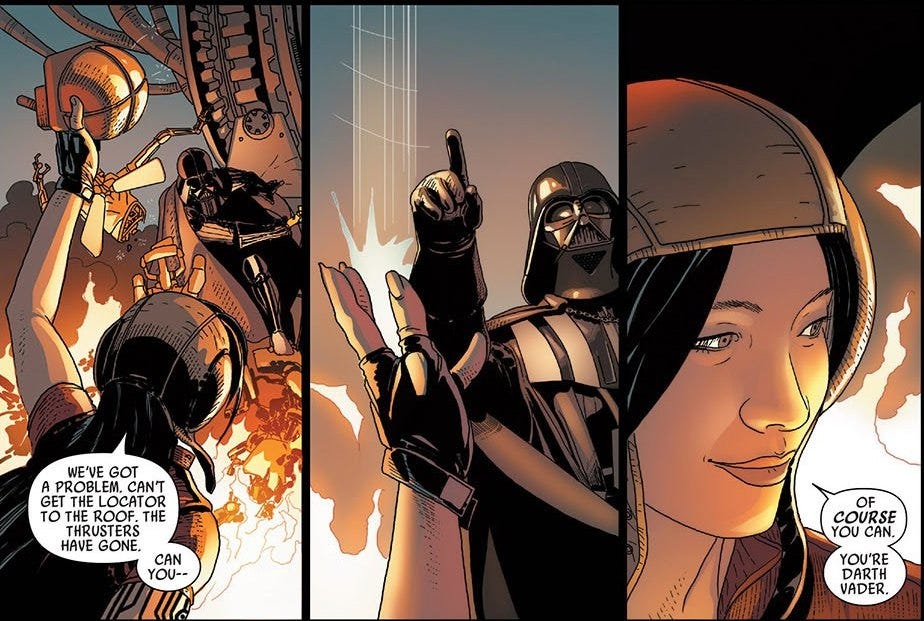
I’ve sung my praises of the writing, but what about the artwork itself? This is where things are far more of a mixed bag. Salvador Larroca is responsible for the bulk of the art and he’s proven to be especially controversial among the Star Wars comic book community. A cursory search of the man’s name on Reddit reveals a considerable number of threads highlighting just how bad his drawing can get. For the 2015 Star Wars run, he resorted to what appears to be a bizarre combination of Photoshop and tracing. The result is an ugly mishmash that really doesn’t work, with Larroca’s more recent comic adaptation of the Obi-Wan Kenobi television series being particularly egregious.
Now, the good news is that Darth Vader isn’t anywhere near as bad as some of the stuff Larroca would do later on. There are some odd flubs here and there to be sure, but nothing too horrible that made me want to put the book down and stop reading. Where Larroca’s penciling falters, the vibrant coloring and shading are generally able to pick up the slack. The thing is, once you see some of the other side issues in this omnibus that were drawn by Mike Deodato Jr., Leinil Francis Yu, Mike Norton, and Max Fiumara as well as the stunning covers handled by other artists, it’s quite difficult to ignore how much Larroca pales in comparison. Most will probably cite Vader Down #1 as the omnibus’ standout issue since it features Vader’s famous line, “All I’m surrounded by is fear and dead men” and an incredible sense of scale. It just made me wish that Deodato Jr. had drawn the entire series instead.
Larroca is not without talent and I think some of his best moments are the two-page spreads which generally succeed in capturing the huge scale of the Star Wars universe. Yet I think it’s pretty clear that Lucasfilm keeps hiring him less for his drawing skills and more for the fact that he’s able to dish out dozens of issues a year across multiple series. Punctuality and strong work ethic are great traits, but I think most readers would vastly prefer quality over quantity in an artist. As is, you’re going to have to accept a Darth Vader comic that from a visual standpoint only reaches good instead of great while the rest is just passable. Gillen’s writing is really what most are going to stay for.
The entire narrative, which compromises of 25 issues and a few side comics that are all collected in this omnibus in the desired reading order, largely fulfilled what I wanted out of a good Darth Vader story. Despite admitting to not liking the prequels, Gillen has clearly done his homework in researching all the Star Wars films and crafting an interquel chapter that falls neatly in between. Vader himself goes through a satisfying character arc, and the strongest moments come when we see him contemplating what strategic move to take next. By the end of this series, we have gained a greater understanding of what his motivations are and how they have changed over time. I enjoyed my time with Darth Vader and can certainly recommend it as a pretty decent starting off point for anyone who wants to get into Star Wars comics.

I’ll conclude this review by discussing this book’s format and what the most accessible way is to read these comics. As I alluded to at the start, I’ve recently been collecting more Marvel Omnibus volumes. If you aren’t familiar with them, these are massive hardcover books that contain entire runs and story arcs of notable comics. The quality is exceptional and for all the faults Disney has, they have not skimped out on making sure that diehard collectors such as yours truly get their money’s worth. Believe me, these are the kinds of coffee table-sized books you need to save up for each month because the heavier ones can cost $150 USD or more. Chances are you’ll probably pay less than that because online retailers like Amazon run discounts, but I live in Japan and have to deal with added shipping costs. You may face similar challenges depending on where you are based.
At 736 pages, Star Wars: Darth Vader by Kieron Gillen & Salvador Larroca Omnibus is surprisingly one of the shorter entries in the Marvel Omnibus line and originally retailed for $100 which isn’t too bad considering all the issues it contains. Unfortunately, even the second edition released in 2022 is out of print. I was able to snag a used copy in good condition off a third party Amazon JP seller for just $35, but that was a total fluke and I would not expect most to ever come across such an incredible deal. A look at Amazon US shows that it’s going for $200 minimum and eBay prices aren’t much better. Until this omnibus comes back in print (if that ever happens), I can’t really recommend you go for it now.
However, those who missed out are in luck. Late last year, Marvel published the first half of this Darth Vader series under their Epic Collection line. While obviously not as nice as the Marvel Omnibus edition, the overall quality is still quite good considering that these are meant to be affordable paperbacks. It’s currently hovering around $25 and the second volume will be out later this year. For that price, you can’t go wrong. If the gargantuan (I’m running out of synonyms for big) Marvel Omnibus hardcovers are for the insane collectors like me, then the Epics are the more reasonable alternatives for the average person who doesn’t want to give themselves a hernia every time they leave their bookshelf.
Foreign Perspectives is a reader-supported Substack. If you like my work and have come this far, consider opting for a paid subscription so I can continue writing in-depth articles such as these on a regular basis. Your support is greatly appreciated!


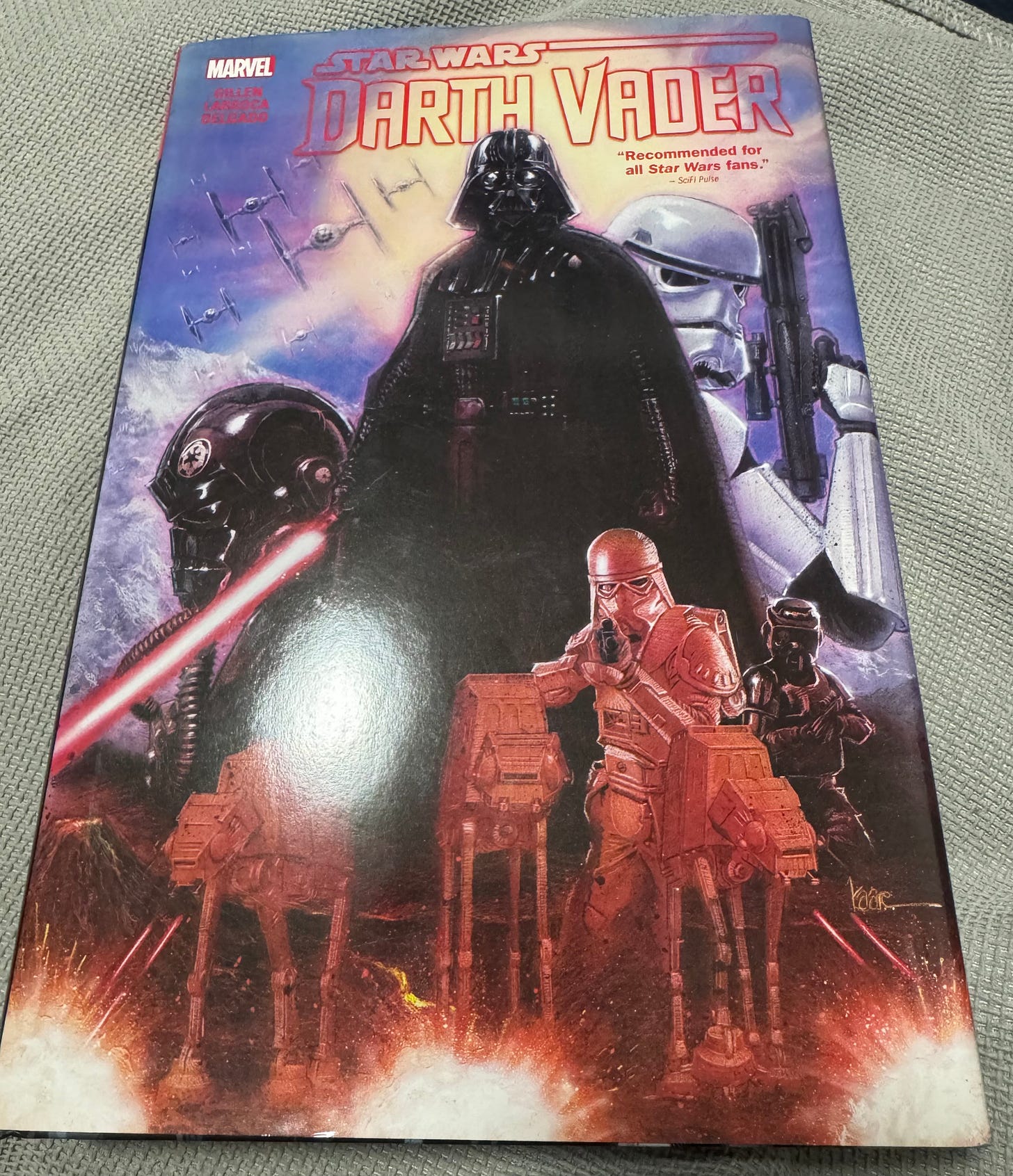
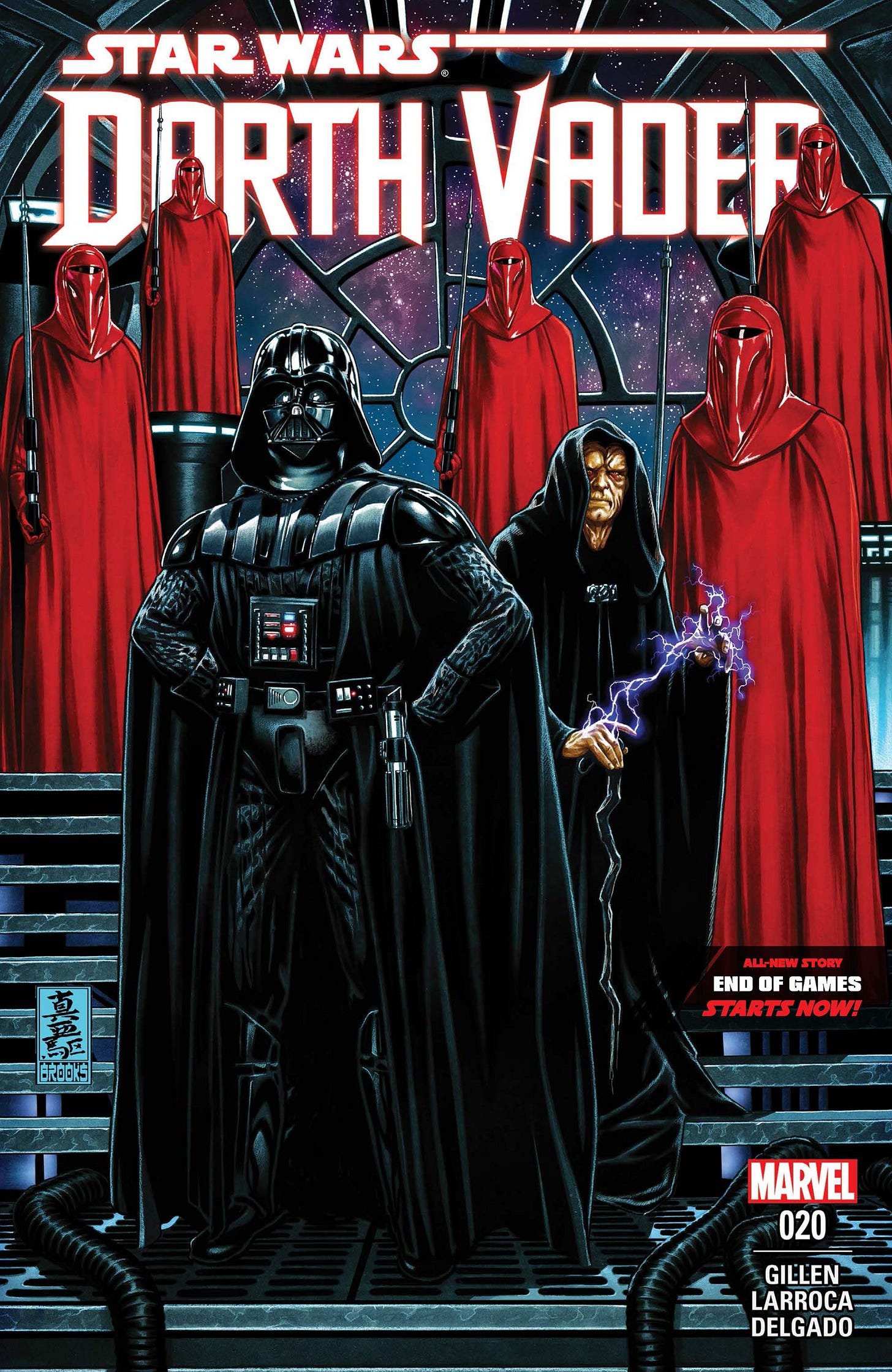
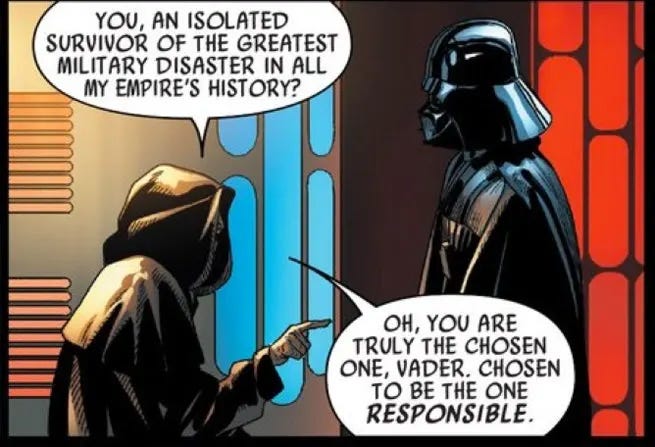
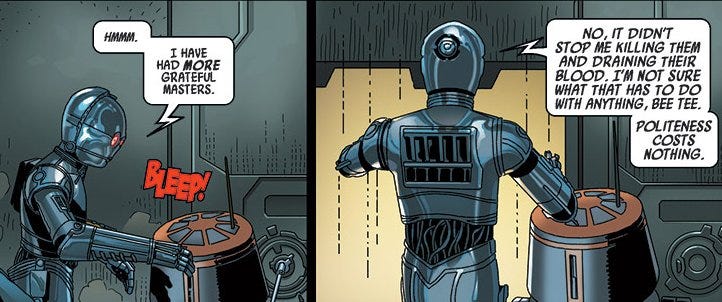
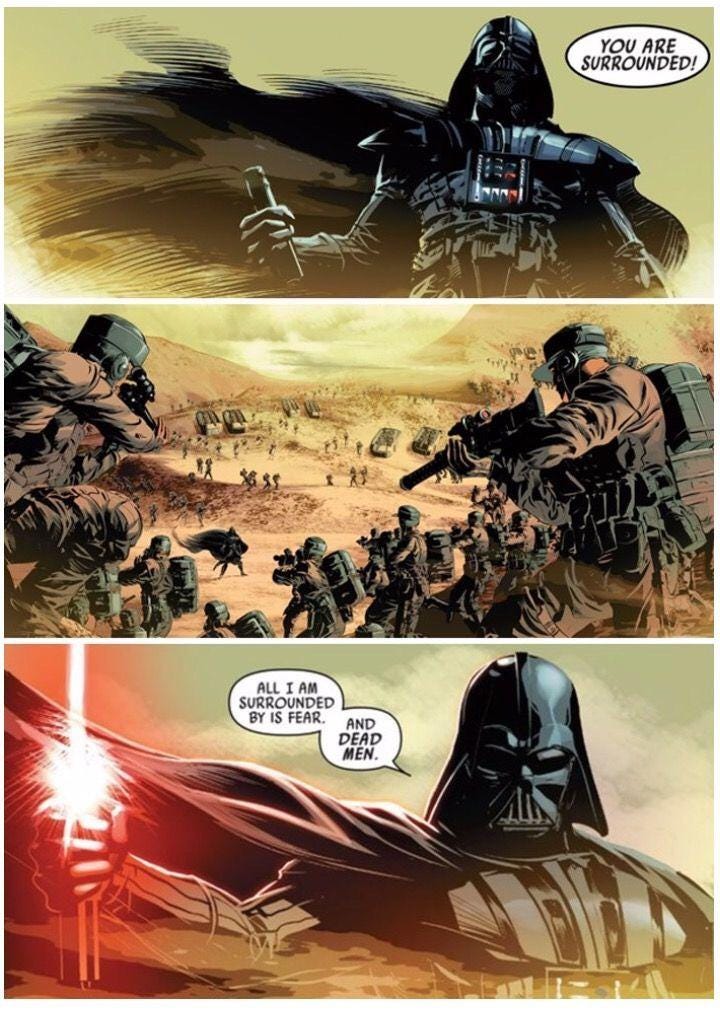
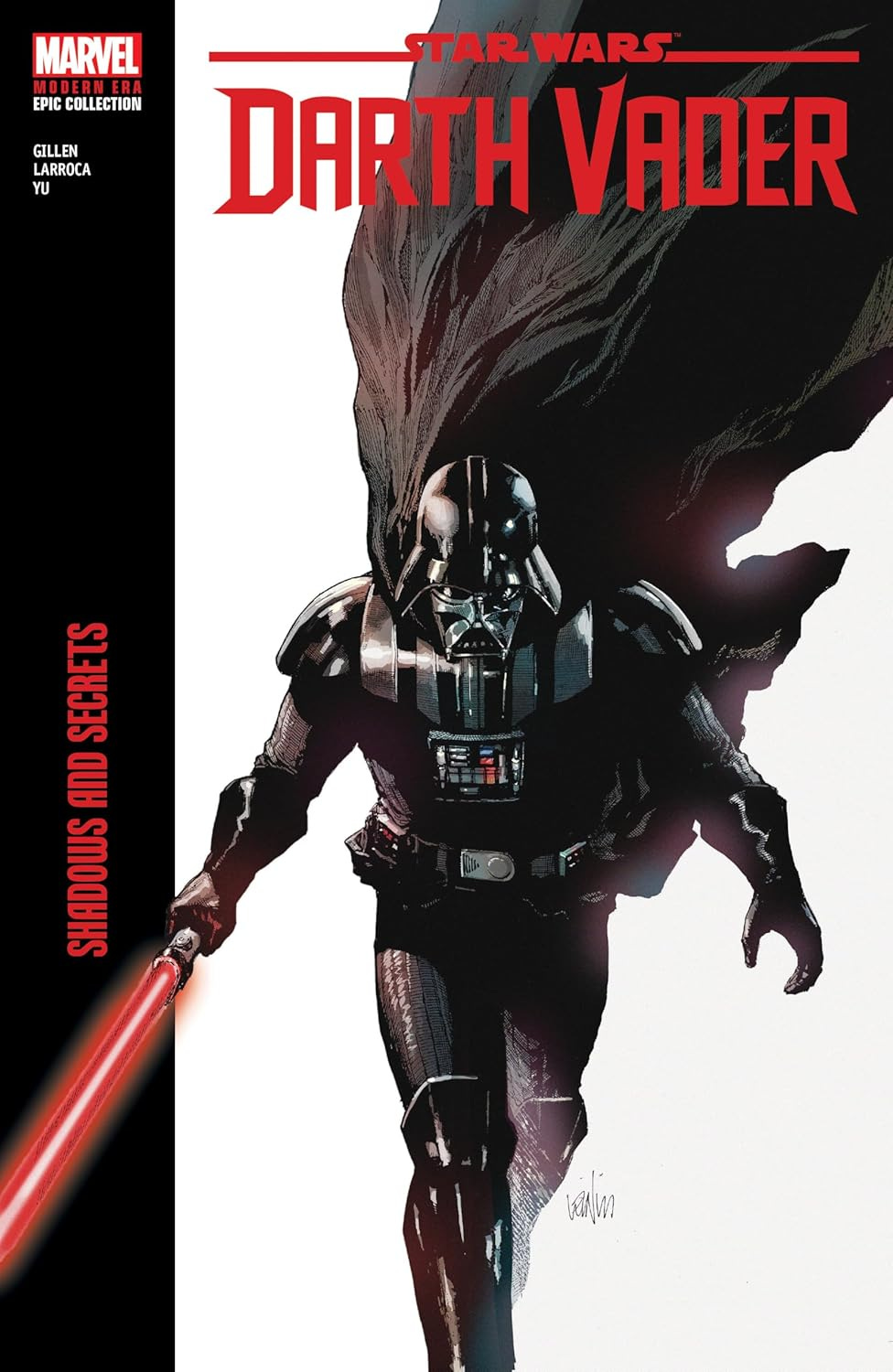
Great review. I read and enjoyed the series as it came out in a monthly format.
Unfortunately, the Marvel Star Wars comics have had too many instances of tracing gone wrong or poor attempts at recreating the faces of the actors. Larroca is by far the biggest culprit, but Deodato Jr. is also know for a lot of distracting tracing. Eventually, Deodato's comics will have a character that is obviously Ed Harris or Harvey Keitel!
I think the following volume of Darth Vader, by Charles Soule and Giuseppe Camuncolli, was even better. Highly recommend if you haven't read it.